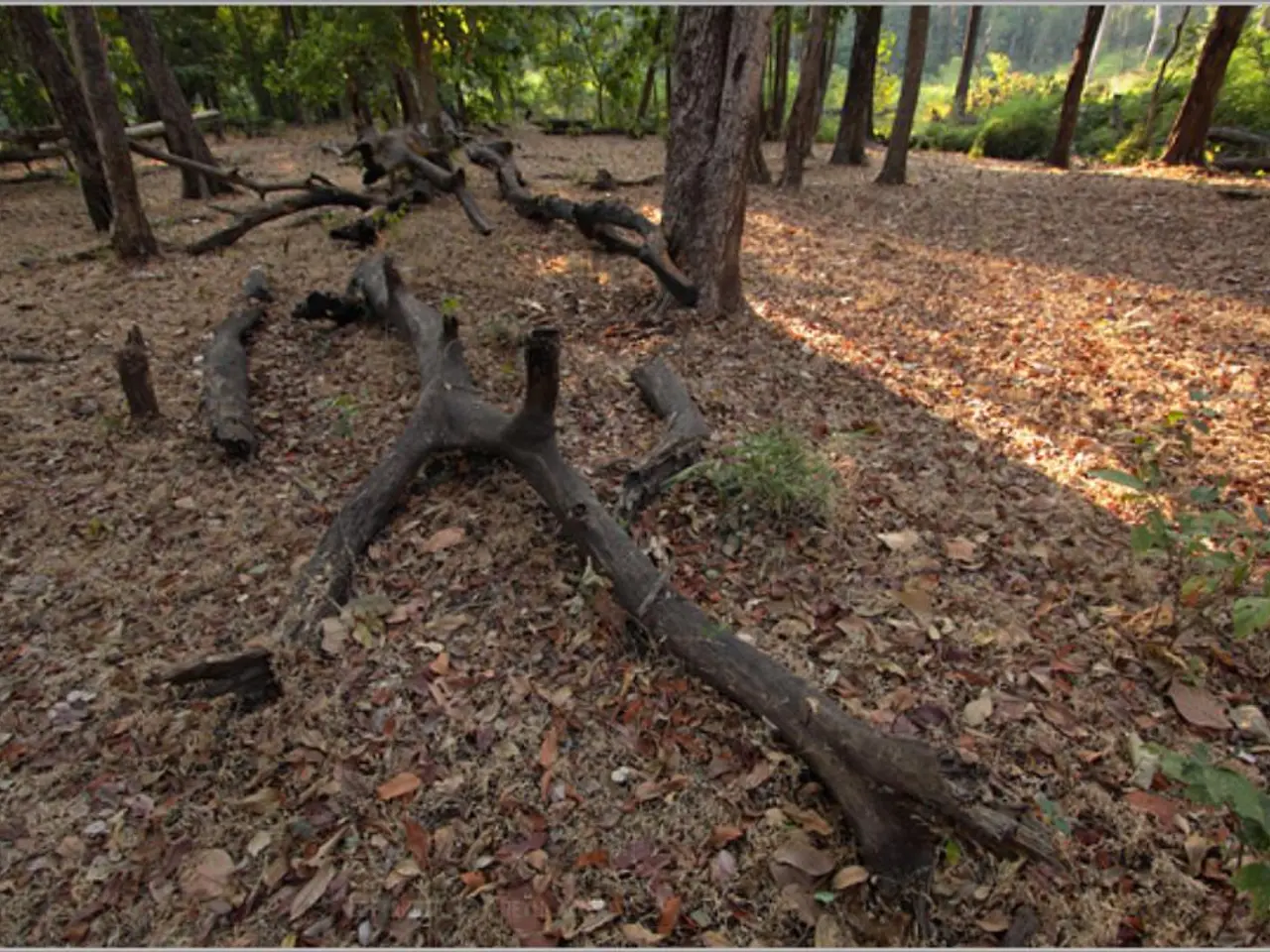Guide for Eliminating Tree Stumps
From promoting natural decay to employing professional services, several options are available when it comes to removing tree stumps. Here's a breakdown of the various methods and factors to consider.
Commercial stump removal formulas, readily available at hardware stores, can be used to promote natural decay. These products often act as fertilizers and contain herbicides to prevent resprouting. However, it's important to note that herbicides are not beneficial for stump decay and may potentially damage nearby plants if misapplied.
For those seeking a quicker solution, professional stump removal services may be the way to go. Arborists use large machines to grind tree stumps, leaving the area within hours. This method is efficient but can be expensive, as arborists charge based on the size of the stump.
A less expensive, albeit slower, option is allowing the stump to decay naturally. While this process can take between 10 to 15 years, factors such as species, size, and environment can significantly influence the decay time. For instance, hardwoods like oak and maple take longer to break down compared to softer woods like pine or spruce.
To speed up the natural decay process, several approaches can be taken. Mechanical removal, such as grinding or digging out the stump, removes it from the site, eliminating decay time but requiring equipment or professional services. Chemical decomposition, using products containing potassium nitrate or similar compounds, can speed up wood softening and decay. Controlled burning of the stump may also be an option, but local regulations should be consulted first.
Drilling holes into the stump and adding nitrogen-rich substances, such as fertilizer, can stimulate microbial activity to hasten decomposition. Keeping the stump moist by covering it can also promote fungal growth and decay.
Manual stump removal methods include using a pry bar to lift the stump from the ground, or digging it out. However, digging out a larger stump is not practical due to the labor-intensity involved. Leaving the stump four to six feet tall provides leverage for prying and lifting.
It's worth mentioning that dead stumps serve as important sources of food and shelter for insects, birds, and other wildlife. As decay proceeds, the stump and roots release nutrients back into the soil, which can be beneficial for surrounding plants. However, decaying roots may also cause ground settling, potentially affecting nearby structures or landscaping. Additionally, decomposing wood can attract pests such as termites or carpenter ants, which might pose risks to nearby wooden structures, especially in termite-prone regions.
In conclusion, while natural decay is a cost-effective and eco-friendly option for stump removal, it requires patience. For faster clearance, mechanical grinding or chemical treatments are common methods to reduce wait time and improve land usability.
- Incorporating commercial stump removal formulas, readily available at home-and-garden stores, promotes natural decay of tree stumps, functioning as fertilizers but potentially damaging nearby plants if misapplied.
- For individuals seeking a quicker solution, professional stump removal services using large machines to grind tree stumps may be more suitable, although it can be expensive.
- A cost-effective, slower alternative is allowing the stump to decay naturally; factors like species, size, and environment significantly influence the decay time, with hardwoods taking longer than softer woods.
- To expedite the natural decay process, measures such as mechanical removal, chemical decomposition, controlled burning, drilling holes and adding nitrogen-rich substances, or keeping the stump moist by covering it can be taken.
- Dead stumps offer beneficial food and shelter for wildlife, while releasing nutrients back into the soil that can nourish surrounding plants; however, decomposing roots may cause ground settling and potentially affect nearby structures, and decaying wood can attract pests like termites and carpenter ants that might pose risks to nearby wooden structures in termite-prone regions.




